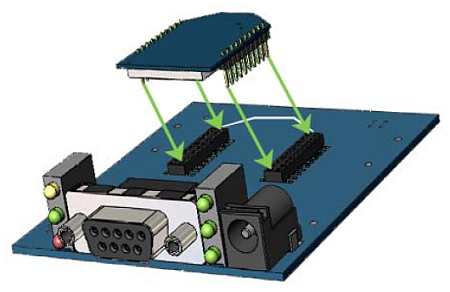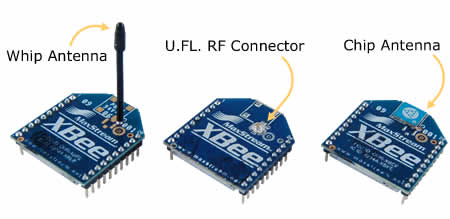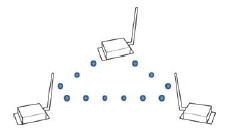ZigBee modules implement low-end mesh
Apr 10, 2007 — by LinuxDevices Staff — from the LinuxDevices Archive — 25 views Digi subsidiary MaxStream unveiled a next-generation ZigBee wireless communications module series at the Embedded Systems Conference last week. The 2.4GHz XBee Series 2 implements full mesh networking with self-discovery and self-healing capabilities, in addition to basic ZigBee/IEEE 802.15.4 functions for low-end… wireless sensor networks, the company said.
Digi subsidiary MaxStream unveiled a next-generation ZigBee wireless communications module series at the Embedded Systems Conference last week. The 2.4GHz XBee Series 2 implements full mesh networking with self-discovery and self-healing capabilities, in addition to basic ZigBee/IEEE 802.15.4 functions for low-end… wireless sensor networks, the company said.
digg this story |
ZigBee is a low-cost, low-power, low-data-rate wireless networking standard intended for monitoring and control applications in both industrial and home environments. The technology aims at different types of applications from those served by Bluetooth, according to the ZigBee Alliance. Among other interesting capabilities, ZigBee is said to be capable of implementing static and dynamic star and mesh networks with up to 65,000+ nodes. An interesting table comparing ZigBee with other wireless technologies appears here (source: ZigBee Alliance; note: “KB/sec” refers to kilobits/sec).
The XBee Series 2 modules are based on an EM250 ZigBee SoC (system-on-chip) from Ember Corp. Ember's fourth-generation wireless mesh networking device, the EM250 integrates a programmable microprocessor, 2.4 GHz RF radio, network protocol stack, and memory into a single 7 x 7 mm chip claimed to deliver twice the wireless range of competitive ZigBee controllers.
MaxStream says its new XBee Series 2 modules are appropriate for coordinators and routers, as well as end devices, and they provide low power sleep modes to conserve power. The modules implement all required ZigBee functions in a plug-and-play manner, and are easy to interface from both a hardware and software perspective, according to the company.

The XBee module plugs in like a macro-component
Four different antenna options are supported: wire whip, U.FL connector, chip antenna, and RPSMA connector. The three antenna types are shown below.

For operation, data is simply fed into one module, and it gets sent out the other end of the wireless link, the company claims, adding: “If more advanced functionality is needed, the modules support an extensive set of AT commands.”

Using the XBee module in UART mode
The modules come equipped with MaxStream's X-CTU software, which allows network designers to easily test and configure ZigBee networks, including node recognition and network management tools, according to the company.

Point-to-point communications
Availability
Development kits for the Series 2 XBEE ZigBee modules will be available starting at the end of April at a price of $339. FCC approval for the modules is pending.
A ZigBee tutorial can be found here.
This article was originally published on LinuxDevices.com and has been donated to the open source community by QuinStreet Inc. Please visit LinuxToday.com for up-to-date news and articles about Linux and open source.